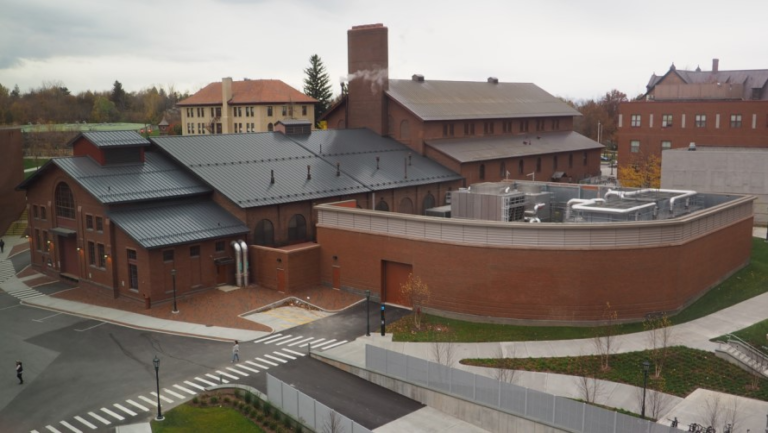Contact Us
Great things in business are never done one. They're done by a team of people.
Great things in business are never done one. They're done by a team of people.

Central Heating and Cooling Automation is the need of every building. To smartly save on energy consumption without compromising on heating and cooling requirements. We Have expertise HVAC Automation for the Campus buildings.
A recent study demonstrated that controlling the supply air temperature of a central campus heating and cooling system can significantly reduce energy use. The study utilized a low-cost control strategy, which is applicable to most common HVAC systems in North America. Energy savings were observed at all outside air temperatures, with the greatest energy savings achieved between 16 and 24 degrees Celsius. The study also demonstrates that the new control strategy is simple and requires little initial investment, compared with more complex approaches.
One advantage of using supply air control is that it responds more quickly to temperature variations than return air. This may increase the hunting for a specific set point and require modifications to the control algorithm. However, such modifications should be done with the original equipment manufacturer. Ideally, the control scheme should use a set point that is adjustable, not automatic, and make all underfloor air at the same temperature.
The temperature and pressure of the supply air is the most significant component of the system’s energy use. If a terminal box is only 65% open, it will reset its temperature and pressure. This can result in hot spots. To prevent this problem, you can install thermostats that can learn the thermal mass of the building and optimize start/stop control. By incorporating these controls into your building automation system, you can drastically reduce energy costs and improve the comfort of your building.
Uptime automation solutions are essential to the operation of any central campus heating and cooling system. These systems allow for real-time monitoring and control of HVAC equipment. By identifying anomalies, these systems can be set to automatically adjust HVAC equipment based on environmental conditions or tenant comfort levels. Western Mechanical and American Auto-Matrix provide customized solutions for individual campuses, multi-site properties, and campuses. These solutions help save energy, lower operating costs, and reduce environmental impact, and may qualify for rebates.
Uptime automation solutions provide a number of benefits. Building management systems are fully integrated with energy and water consumption monitoring. Uptime automation solutions can be designed to monitor the efficiency of HVAC systems, and can incorporate other building systems such as building controls. Uptime automation solutions provide energy monitoring, hot-swap capability, and redundancy. Integrated building management systems also ensure that changeovers can be properly approved.
Uptime automation solutions enable building managers to view and manage the energy and water usage of the central campus heating and cooling system remotely. These solutions bring all energy data to a single dashboard, allowing building managers to make informed decisions. These systems can also significantly reduce energy costs by preventing unnecessary wastage. By scheduling high impact events during off-peak hours, energy use can be reduced. In addition, buildings can optimize their performance and save on costs.
Uptime Automation employees are experienced and trained to provide troubleshooting services for Central Campus heating and air conditioning systems. These professionals are dedicated to the success of your business. With our support, you can be rest assured that your heating and cooling system is operating at its highest potential. Here are some of the steps we take to ensure this. During the cooling season, we drain and refill the system. To ensure peak performance, we follow weather forecasts to optimize the draining and refilling process before cold or hot weather. During warm weather, the system may run dry and thereby fail to meet expectations.
Uptime automation can automate the maintenance of central campus heating and cooling systems. DDC systems are computer systems with centralized computer workstations that monitor and adjust the operation of the heating and cooling system. The software allows staff to monitor system performance in real-time and make manual program changes as needed. Uptime automation can enable basic maintenance and help minimize the risks of human error. Maintenance of central campus heating and cooling system by uptime automation comprises several tasks that must be performed on time.
Building automation systems are computerized and control HVAC equipment in most of the buildings on campus. The systems enable the Office of Energy Management to optimize comfort, efficiency, and reliability of campus buildings. Uptime automation provides alerts when control parameters are out of range, allowing OEM employees to correct the problem before building occupants are even aware of the issue. With this system, maintenance of central campus heating and cooling system is easier and less expensive.
Adding {{itemName}} to cart
Added {{itemName}} to cart